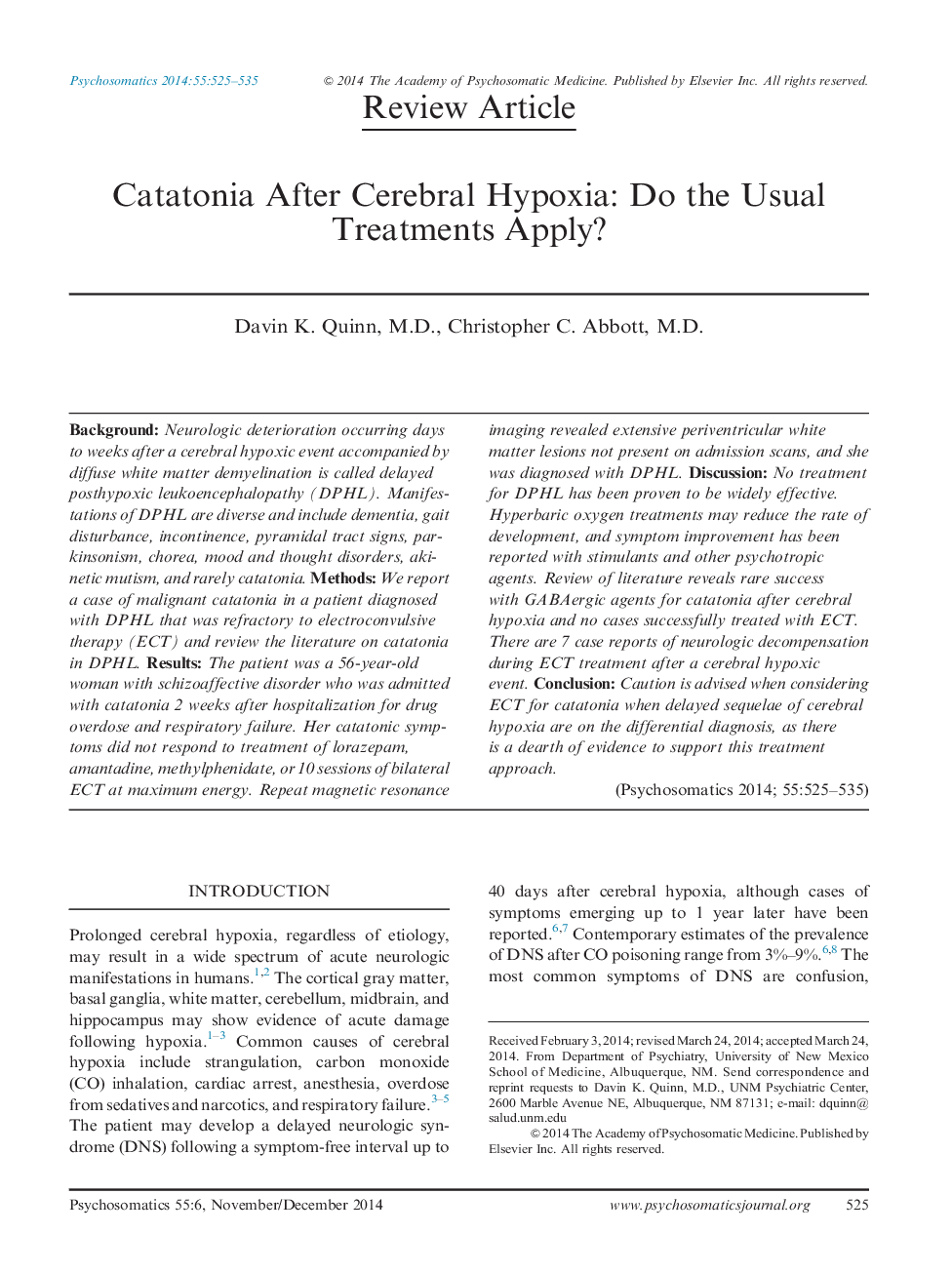| کد مقاله | کد نشریه | سال انتشار | مقاله انگلیسی | نسخه تمام متن |
|---|---|---|---|---|
| 337465 | 547548 | 2014 | 11 صفحه PDF | دانلود رایگان |

BackgroundNeurologic deterioration occurring days to weeks after a cerebral hypoxic event accompanied by diffuse white matter demyelination is called delayed posthypoxic leukoencephalopathy (DPHL). Manifestations of DPHL are diverse and include dementia, gait disturbance, incontinence, pyramidal tract signs, parkinsonism, chorea, mood and thought disorders, akinetic mutism, and rarely catatonia.MethodsWe report a case of malignant catatonia in a patient diagnosed with DPHL that was refractory to electroconvulsive therapy (ECT) and review the literature on catatonia in DPHL.ResultsThe patient was a 56-year-old woman with schizoaffective disorder who was admitted with catatonia 2 weeks after hospitalization for drug overdose and respiratory failure. Her catatonic symptoms did not respond to treatment of lorazepam, amantadine, methylphenidate, or 10 sessions of bilateral ECT at maximum energy. Repeat magnetic resonance imaging revealed extensive periventricular white matter lesions not present on admission scans, and she was diagnosed with DPHL.DiscussionNo treatment for DPHL has been proven to be widely effective. Hyperbaric oxygen treatments may reduce the rate of development, and symptom improvement has been reported with stimulants and other psychotropic agents. Review of literature reveals rare success with GABAergic agents for catatonia after cerebral hypoxia and no cases successfully treated with ECT. There are 7 case reports of neurologic decompensation during ECT treatment after a cerebral hypoxic event.ConclusionCaution is advised when considering ECT for catatonia when delayed sequelae of cerebral hypoxia are on the differential diagnosis, as there is a dearth of evidence to support this treatment approach.
Journal: Psychosomatics - Volume 55, Issue 6, November–December 2014, Pages 525–535